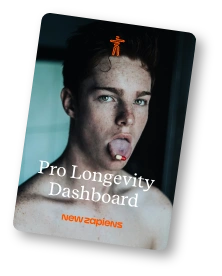Cycle Syncing: Hype or Your Monthly Superpower

Fifteen years ago, if you’d mentioned “cycle syncing,” most women would have blinked at you. Men might have guessed it was something to do with syncing Spotify playlists. Now, it’s a buzzword on wellness podcasts, Instagram feeds, and in group chats.
If you’ve ever wondered why one week you feel like conquering the world and the next you want to cancel plans, curl up in bed, and survive on carbs, it’s not in your head. Hormonal shifts can change everything from your energy and mood to your appetite, digestion, and libido. That week you feel bloated for no reason? Hormones. That sudden burst of motivation? Also hormones.
Cycle syncing is about working with these changes, not against them. It’s the practice of matching your nutrition, workouts, work, and social calendar to the natural rhythm of your menstrual cycle. The goal? Less fighting your body, more flow.
Men vs Women: The Hormone Plot Twist
Men’s hormones run on a neat 24-hour cycle. Testosterone peaks in the morning, giving them more focus, competitiveness, and often a higher libido. By afternoon, energy and motivation dip. By evening, testosterone is at its lowest, which is why most men feel more relaxed and less inclined to take on big challenges at night.
Women’s hormones follow a more complex monthly pattern. A typical cycle is around 28 days, though anywhere between 21 and 35 can be normal. It moves through four distinct phases, each with its own hormone profile, influencing mood, energy, focus, sleep, and yes, your sex drive.
The Four Phases: Go’s and No-Go’s
Menstrual Phase (Days 1–5)
Hormones are at their lowest and the body is focused on shedding the uterine lining and repairing itself. Energy often dips, and your system benefits from warmth, rest, and extra nourishment.
- Sleep: Aim for 8–10 hours. Short naps help with fatigue. Keep evenings calm and lights dim to support melatonin.
- Nutrition: Focus on iron-rich foods like leafy greens, red meat, lentils, and beets. Add mineral-rich broths and soups. Include healthy fats such as avocado, nuts, and olive oil. Herbal teas like nettle, raspberry leaf, or ginger are soothing.
- Supplements: Magnesium to ease cramps, vitamin C to boost iron absorption, iron if tested low.
- Exercise: Walking, stretching, restorative or yin yoga. Avoid high-intensity unless you feel genuinely energised.
- Do: Journal, reflect, set gentle intentions. Keep your workload manageable.
- No-Go: Cold exposure or ice-cold foods, which can worsen cramps and drain energy.
Follicular Phase (Days 6–14)
Estrogen begins to rise, FSH is active, and energy and focus return. Creativity and motivation get a boost.
- Sleep: Seven to nine hours is usually enough. Get morning sunlight to reset your circadian rhythm.
- Nutrition: Eat fresh, light meals such as sprouts, citrus, berries, and leafy greens. Lean proteins like chicken, eggs, and white fish support muscle and recovery. Fermented foods help gut health. Pumpkin and flax seeds can gently support hormones.
- Supplements: B-complex for energy, probiotics for digestion, omega-3s for brain health.
- Exercise: Cardio, dance, boxing, or skill-based training. Try new workouts — your body adapts more easily now.
- Do: Start new projects, brainstorm ideas, network, and declutter or organise your space.
- No-Go: Too much caffeine on an empty stomach, which can spike cortisol and disrupt hormones.
Ovulatory Phase (Days 15–17)
Estrogen peaks, testosterone gets a small boost, and LH triggers ovulation. You’re at your most confident, articulate, and physically strong.
- Sleep: Seven to eight hours, but make recovery a priority after busy or active days. Avoid excess screen time before bed to protect melatonin.
- Nutrition: Fill your plate with colourful raw vegetables and salads. Include cruciferous vegetables like broccoli and kale to help metabolise estrogen. Add zinc-rich foods such as oysters and pumpkin seeds to support fertility and libido. Hydrating foods like cucumber and watermelon are great in warm weather.
- Supplements: Zinc for reproductive health, vitamin C for ovary support, maca root for libido if you like.
- Exercise: HIIT, heavy lifts, spin, or group classes. Aim for personal bests in performance.
- Do: Schedule important presentations or negotiations. Batch creative content or collaborative work.
- No-Go: None. You are ready to conquer the world.
Luteal Phase (Days 18–28)
Progesterone dominates in the early luteal phase, promoting calm and deeper sleep, before both progesterone and estrogen drop toward menstruation. This is when PMS symptoms can appear if hormones are imbalanced.
- Sleep: Keep your bedroom cool to counter the higher body temperature late luteal. Magnesium before bed can support relaxation.
- Nutrition: Choose warm, grounding meals like sweet potato, squash, and lentils. Include complex carbs to keep mood stable. Magnesium-rich foods like dark chocolate, spinach, and pumpkin seeds are beneficial. Sesame and sunflower seeds can support hormone balance.
- Supplements: Magnesium glycinate for sleep and mood, vitamin B6 for progesterone and serotonin support, omega-3s for inflammation.
- Exercise: Early luteal is great for strength training or moderate cardio. Late luteal is better for yoga, walking, or pilates.
- Do: Wrap up projects, prioritise self-care, and prepare for the next cycle.
- No-Go: High-intensity training in the final days before your period.
Myth-Busting Cycle Syncing
Myth 1: It’s just a TikTok trend
The term might be new, but the concept is grounded in decades of endocrinology and women’s health research. Functional medicine practitioners have been talking about aligning lifestyle with hormonal changes for years.
Myth 2: Everyone’s cycle is 28 days
Twenty-eight days is an average, not a rule. Anywhere between 21 and 35 days can be normal, and syncing still works — you simply adjust your phases to match your own cycle.
Myth 3: If you miss one workout or eat “off-phase,” you’ve ruined it
Cycle syncing isn’t all-or-nothing. The benefits come from consistency over time, not perfection.
Myth 4: It’s only for women with PMS or fertility goals
Even women with regular, symptom-free cycles can improve energy, focus, workout recovery, and overall wellbeing by syncing with their hormones.
Myth 5: Men don’t need to think about hormones
Men have hormone cycles too but theirs reset every 24 hours. Testosterone is highest in the morning, making it a prime time for strength training, problem-solving, and intimacy. Levels dip in the evening, which is when rest, lower-pressure tasks, and winding down come more naturally.
Why This Matters
Cycle syncing isn’t about perfection, it’s about awareness. When you know your monthly rhythm, you can work with it instead of feeling like it’s working against you. You’ll be able to plan your workouts, projects, and social life around your strengths, and give yourself permission to rest when your body needs it.
This approach can be transformative for women with PCOS, endometriosis, or irregular cycles, but it’s just as helpful for those with regular cycles. Even small changes can reduce PMS symptoms, improve energy, and make daily life more predictable.
Some couples even plan their holidays around the ovulatory phase, when energy, mood, and libido tend to peak.
So what now? Is it hype or your new monthly superpower? Hormones shift — that’s not hype, it’s biology. The way they infl uence your mood, focus, digestion, and relationships is real. So I’d say, learning to live in sync with those shifts isn’t just self-care, it’s your monthly superpower.
And if keeping track of all this feels overwhelming, that’s where tools like reina come in — giving you daily, personalized insights based on your cycle so you can spend less time decoding your hormones and more time living your life.
Author: Karina Repko
Co-Founder & CEO of nayla




